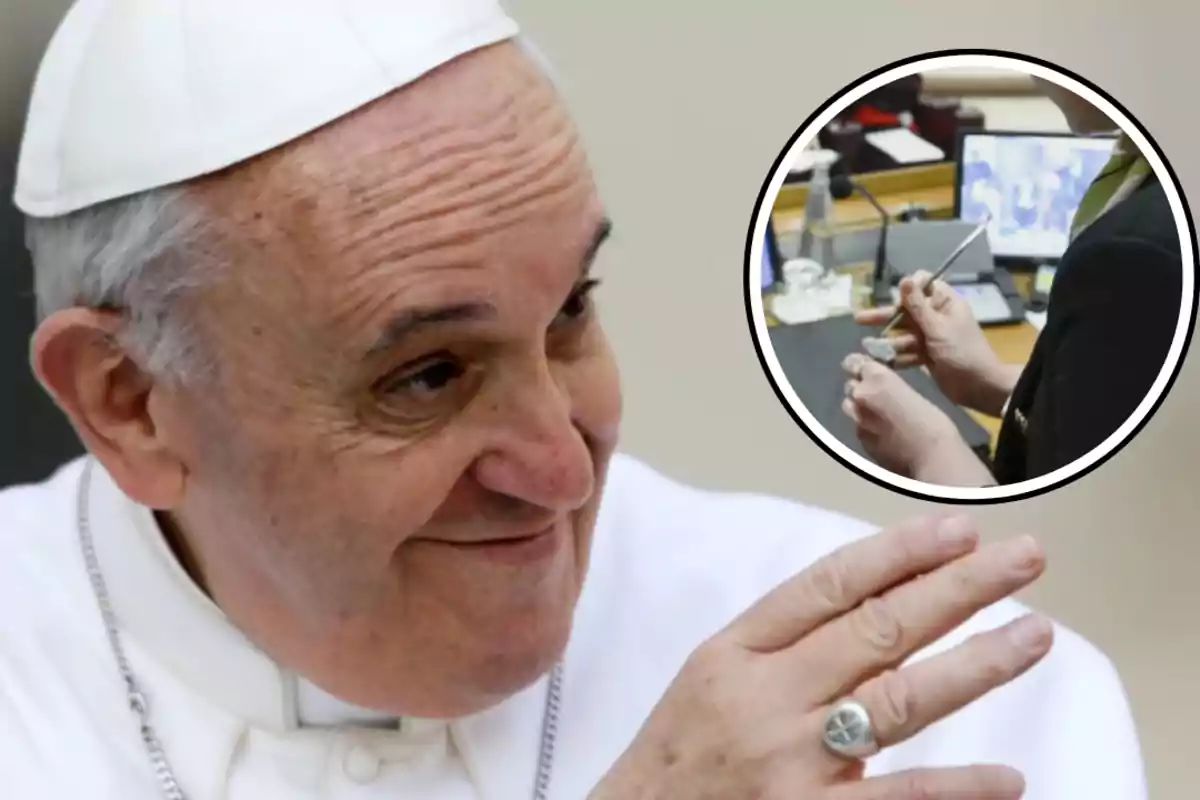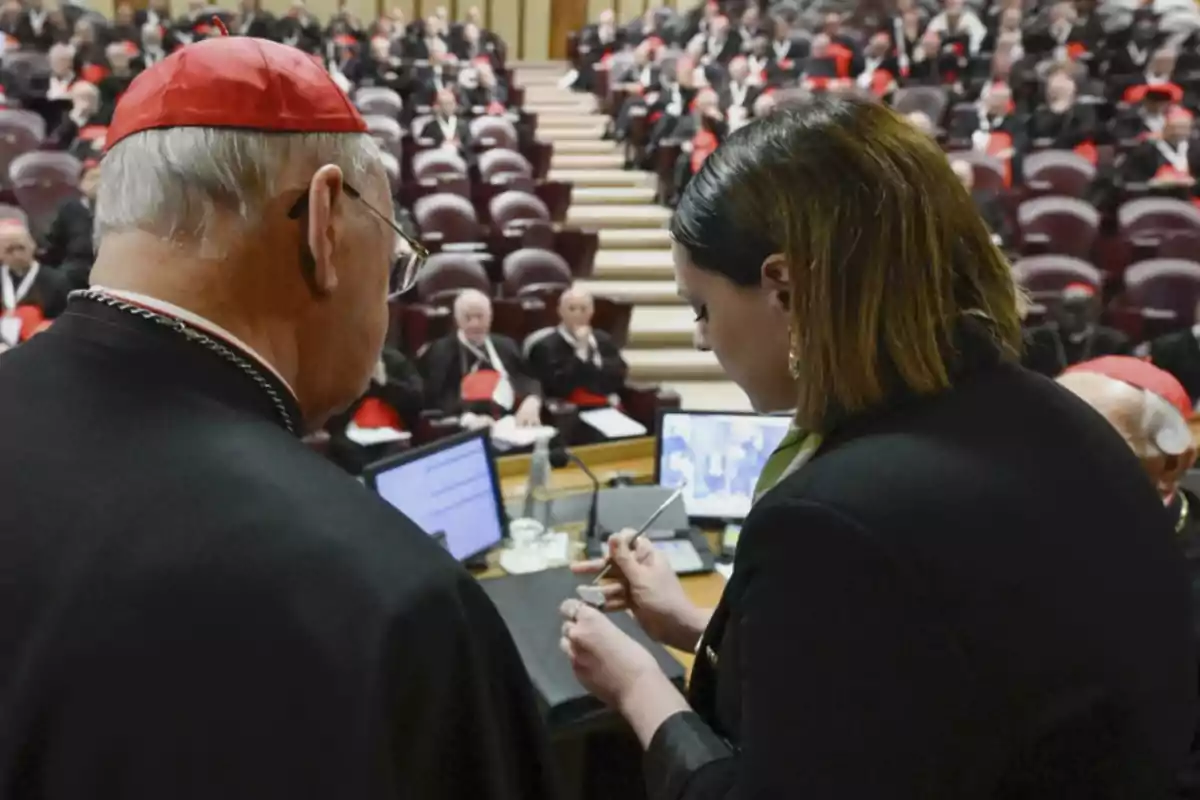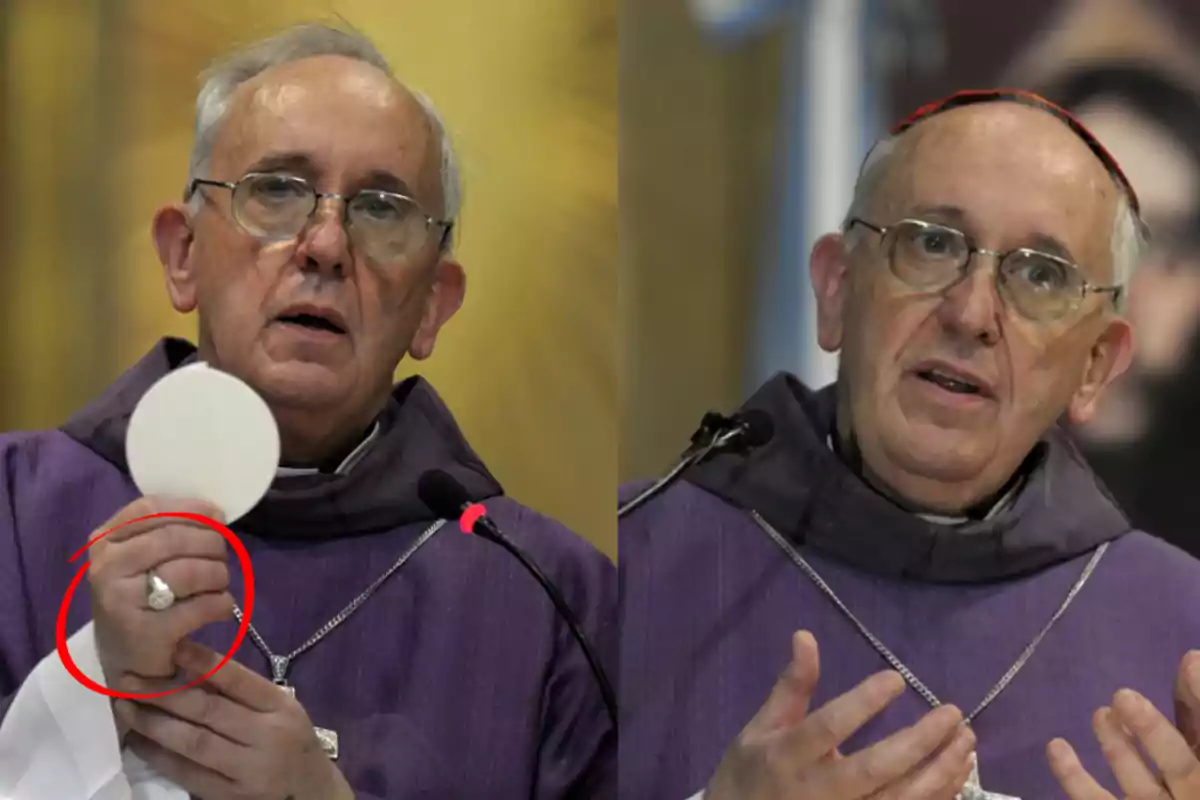
They destroyed Francis' Ring of the Fisherman before the conclave in the Vatican
The Holy See annulled the symbols of papal power just hours before electing the new pontiff
The Vatican annulled the Ring of the Fisherman and the official seals of Pope Francis this Tuesday, in a solemn ceremony just hours before the start of the conclave. This action marked the formal end of his pontificate, sixteen days after his death.
Matteo Bruni, spokesperson for the Holy See, confirmed the news. The rite was led by the camerlengo, Cardinal Joseph Kevin Farrell, who certified the death of the Argentine pope on April 21, at the age of 88.
Vatican: symbolic end of Francis's pontificate
The process was in accordance with the apostolic constitution Universi Dominici Gregis, which regulates the functioning of the Church during the sede vacante. The document requires annulling the Ring of the Fisherman and the lead seal, used to authenticate official documents.

Solemn ceremony and millennial tradition
The destruction of the ring was carried out with a cross carved on its surface, a symbol that it is no longer valid. The procedure aims to prevent forgeries or misuse in the name of the deceased pope.
Francis had worn this ring since his enthronement in 2013, although he preferred a simpler one, gold-plated silver, with a central cross, which he had already used as Archbishop of Buenos Aires.

After his death, his quarters in the Casa Santa Marta and those of the Apostolic Palace were also closed and sealed. These residences will remain closed until the election of his successor.
Tomorrow the conclave will begin in the Sistine Chapel. Previously, a mass will be held that will gather the cardinal electors. The new pope will receive the Ring of the Fishermanand the pallium during the mass marking the start of his pontificate, with the traditional Urbi et Orbi blessing.
The Ring of the Fisherman: history, power, and symbolism
The Ring of the Fisherman has its origin in the fourth century, when bishops received a ring with their pastoral coat of arms as a symbol of authority. In Spain, since the seventh century, this element became an official part of the episcopal investiture rite.
Beyond its symbolic value, the ring had practical functions: it was used to seal documents and authenticate ecclesiastical decisions. It also represents the spiritual bond between Christ and the Church, like a nuptial alliance.
Throughout history, its design has changed. Since the Second Vatican Council, its aesthetics are more sober. Some popes chose to keep personal rings. John Paul II, for example, kept his from his time as a cardinal. Benedict XVI resumed the image of Saint Peter in his boat, with his name engraved in Latin: Benedictus.
The breaking of tradition in modern times
By tradition, the Camerlengo had to destroy the ring with a silver and ivory hammer after the pope's death. However, in 2013, that rule was modified with the resignation of Benedict XVI: his ring was annulled, but not destroyed.
Francis also broke the mold. He rejected the papal ring offered by the cardinals and preferred to continue using his own.Only on rare occasions did he use the official jewel with the image of Christ, remaining true to his austere style.
With his death, the Ring of the Fisherman was finally destroyed, thus closing a chapter of humility and reforms within the Church. The Catholic Church now awaits its new leader, in a transition marked by symbolisms and traditions that remain despite the changes.
More posts: